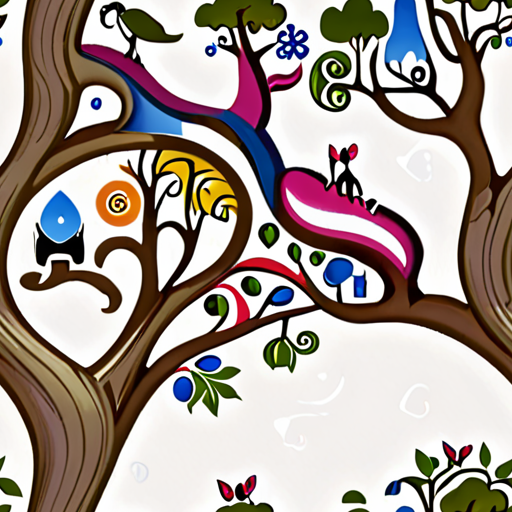Imagination knows no bounds, and neither does the art of creative storytelling. Whether you’re a seasoned writer or just starting out, crafting engaging tales that captivate audiences of every age and genre requires a spark of creativity and a willingness to explore new ideas. From unconventional settings to diverse genres, there are countless ways to breathe life into your stories and transport readers to new worlds. In this comprehensive guide, we’ll delve into the world of creative storytelling, exploring innovative approaches, tried-and-true techniques, and expert tips to help you unlock your imagination and bring your most compelling stories to life.

Unique Story Ideas
I’ve always been fascinated by the art of storytelling, and I’m excited to share some unique story ideas that can inspire you to tap into your creative potential.
-
The Mysterious Stranger
Imagine a character who appears out of nowhere, leaving behind a trail of clues and puzzles for the protagonist to solve. As the story unfolds, the stranger’s true identity and motives are revealed, adding a layer of complexity to the narrative.
-
The Time Traveler’s Dilemma
This idea involves a character who discovers a way to travel through time, but soon realizes that every decision they make has unintended consequences on the present and future. The story explores the butterfly effect and the responsibility that comes with altering the timeline.
-
The Memory Thief
In this tale, a character possesses the ability to steal and manipulate memories. As they navigate the world of memory thieves, they begin to question the nature of reality and the true cost of playing with fire.
-
The Last Love Letter
A young woman discovers a cache of old love letters in her attic, which sparks a journey to uncover the stories behind each letter. Along the way, she learns about the power of love, loss, and the human connection that transcends time.
-
The Island of Lost Things
This story takes place on a mystical island where lost objects from throughout history have washed up. A group of characters must navigate the island’s secrets and confront their own pasts in order to find redemption and closure.
-
The Ghostwriter’s Dilemma
A struggling writer discovers that they have the ability to bring fictional characters to life. However, as they become more successful, they realize that their creations are taking on lives of their own, threatening to destroy the very fabric of reality.
-
The Secret Society
A group of individuals discovers a hidden society that has been operating in secret for centuries. As they delve deeper into the society’s mysteries, they must confront the darkness within themselves and the true purpose of the organization.
-
The Virtual Reality Uprising
In a world where virtual reality has become indistinguishable from reality itself, a group of rebels must fight against the corporation controlling the VR landscape. The story explores the blurred lines between reality and fantasy.
-
The Family Legacy
A young person inherits an ancient family estate, only to discover that it holds secrets and mysteries that have been hidden for generations. As they unravel the truth, they must confront their own destiny and the weight of their family’s legacy.
-
The Dreamwalker’s Journey
A character develops the ability to enter people’s dreams, but soon finds themselves trapped in a world of surreal landscapes and subconscious fears. They must navigate the dreamworld to rescue others and confront their own demons.
What Are the 4 Types of Storytelling?
I’ve always been fascinated by the power of storytelling, and I believe there are four primary types that can captivate audiences and convey messages effectively.
- Personal Storytelling : This type of storytelling revolves around sharing personal anecdotes, experiences, and reflections. It allows individuals to connect with others on a deeper level, fostering empathy and understanding.
- Narrative Storytelling : Narrative storytelling involves crafting a story with a beginning, middle, and end, often featuring characters, plot twists, and conflicts. This type of storytelling can be found in literature, film, and theater.
- Anecdotal Storytelling : Anecdotal storytelling focuses on sharing brief, relatable stories or examples that illustrate a point or convey a message. These stories are often used in public speaking, sales pitches, and marketing campaigns.
- Fable Storytelling : Fable storytelling uses fictional stories to teach moral lessons or convey important messages. These tales often feature animals, mythical creatures, or supernatural elements, making them memorable and engaging.
As a storyteller, I strive to master these four types of storytelling, weaving them together to create captivating narratives that resonate with my audience.
Tips for Effective Storytelling
- Know your audience and tailor your story accordingly.
- Use descriptive language and sensory details to bring your story to life.
- Vary your narrative structure to keep your audience engaged.
- Practice your storytelling skills to become more confident and effective.
Conclusion is Not Necessary

The 5 Cs of Storytelling
I’ve always been fascinated by the art of storytelling, and I believe that understanding its fundamental principles can help us become better communicators and connectors.
- Catchiness : A great story needs to grab our attention from the start. Whether it’s a hook, a surprising fact, or a thought-provoking question, we need something that makes us want to keep reading.
- Clarity : Once we have our audience’s attention, we need to make sure they understand what we’re trying to say. This means using simple, concise language and avoiding jargon or technical terms that might confuse them.
- Conciseness : We don’t have people’s full attention, so we need to get straight to the point. Cut out unnecessary words and focus on the essential elements of the story.
- Coherence : Our story needs to make sense and flow logically. This means organizing our thoughts in a clear and consistent manner, using transitions and connections to guide the reader through the narrative.
- Connection : Finally, we need to make sure our story resonates with our audience. This means tapping into their emotions, values, and experiences, and showing how our story relates to theirs.
By incorporating these five Cs into our storytelling, we can create engaging, effective, and memorable stories that leave a lasting impact on our listeners.

Endless Storytelling Possibilities
I’m always excited to share my passion for creative storytelling with fellow writers and enthusiasts.
-
The Power of Personal Essays
Writing personal essays allows me to reflect on my own experiences and emotions, making it easier to connect with readers who may have gone through similar situations.
-
Exploring Life’s Journey
My personal essays often delve into the ups and downs of life, highlighting the importance of resilience, self-awareness, and growth.
-
Capturing Human Experiences
By sharing my stories, I aim to capture the essence of human experiences, making readers feel seen, heard, and understood.
-
-
Inspiring Narratives
I believe that stories have the power to inspire and motivate others, which is why I strive to create narratives that spark imagination and curiosity.
-
Overcoming Adversity
Many of my stories feature characters who face challenges and obstacles, but ultimately find ways to overcome them, serving as a reminder that we all have the strength to persevere.
-
Finding Purpose and Meaning
Through my narratives, I explore themes of purpose and meaning, encouraging readers to reflect on their own values and goals.
-
-
Reflective Insights
As a writer, I’m constantly seeking to learn and grow, and I believe that reflective insights are essential to the creative process.
-
Self-Discovery
My reflective pieces often focus on self-discovery, helping readers to better understand themselves and their place in the world.
-
Creative Expression
By exploring various forms of creative expression, I aim to inspire readers to tap into their own artistic potential.
-
Whether I’m writing about personal struggles, inspiring narratives, or reflective insights, my goal remains the same: to connect with readers and leave a lasting impact.
Good Creative Writing Topics
I’ve compiled a list of engaging and thought-provoking creative writing topics to inspire your next story.
-
Fantasy and Science Fiction
- A world where magic is real, and you’re tasked with mastering its power.
- A futuristic city where humans coexist with advanced artificial intelligence.
- A space exploration mission gone wrong, leaving you stranded on a mysterious planet.
-
Mystery and Thriller
- You stumble upon a cryptic message that sets off a chain reaction of events.
- A detective with a troubled past must solve a murder mystery before the killer strikes again.
- A group of friends on a road trip discover a hidden treasure, but at what cost?
-
Romance and Drama
- A chance encounter between two strangers leads to a whirlwind romance.
- A family’s secrets and lies threaten to tear them apart.
- A young artist finds inspiration in an unexpected place – a small town with a big heart.
-
Humor and Satire
- A group of misfits start a comedy club in a small town, but things quickly get out of hand.
- A satirical take on modern society, where absurdity reigns supreme.
- A bumbling superhero tries to save the day, but keeps getting in his own way.
-
Horror and Paranormal
- A haunted mansion with a dark history holds secrets and terrors beyond your wildest imagination.
- A group of friends on a camping trip discovers they’re not alone in the woods.
- A cursed object brings chaos and destruction to those who possess it.
-
Historical Fiction
- A young soldier during World War II struggles to come to terms with the horrors of war.
- A woman living in ancient Egypt must navigate the complexities of pharaonic politics.
- A group of slaves in the American South find hope and freedom in the midst of oppression.
-
Personal Essays and Memoirs
- A reflection on a childhood memory that shaped your perspective on life.
- A coming-of-age story about finding identity and purpose.
- A memoir about overcoming adversity and emerging stronger on the other side.

Creating a Story Idea
I’ve always been fascinated by the process of crafting a compelling story idea. As someone who has spent years honing my skills as a writer and storyteller, I can attest that developing a strong concept is crucial to creating engaging content.
- Start with Personal Experiences
- Explore Current Events and Trends
- Brainstorm with Others
- Research and Gather Inspiration
- Develop a Concept Statement
- Refine and Iterate
- Stay True to Your Vision
One effective way to generate ideas is to draw from your own life experiences. Think about significant events, people, or places that have had a profound impact on you. Reflecting on these moments can help you tap into your emotions and create authentic characters and settings.
Staying informed about what’s happening in the world around us can be a great source of inspiration. Consider current events, social issues, or emerging trends that resonate with you. These topics can provide rich material for exploring complex themes and ideas.
Collaborating with fellow writers, artists, or creatives can be a fantastic way to stimulate your imagination. Share your ideas, listen to others, and engage in constructive feedback to help shape your concept.
Reading widely, watching movies, attending concerts, or visiting museums can expose you to diverse perspectives and spark new ideas. Take note of what resonates with you and how you can incorporate those elements into your story.
Once you have a solid foundation, distill your idea into a concise statement that captures its essence. This will help you stay focused and ensure your narrative stays true to its core.
As you continue to develop your idea, be open to revisions and refinements. Test your concept with others, gather feedback, and make adjustments until you feel confident in its potential.
Remember, your unique perspective and voice are essential to creating a compelling story. Don’t be afraid to take risks and push boundaries – it’s often the most innovative ideas that leave a lasting impact.
Tips for Effective Storytelling
To bring your story to life, consider the following tips:
- Use Sensory Details
- Create Relatable Characters
- Build Tension and Conflict
- Edit and Revise
Incorporate sensory descriptions to transport your audience into the world of your story. This will help them become fully immersed and invested in your narrative.
Develop well-rounded characters that readers can root for or empathize with. Give them distinct personalities, motivations, and conflicts to drive the plot forward.
Avoid predictable outcomes by introducing obstacles, challenges, and surprises that keep your audience engaged and curious.
Take the time to review and refine your work, making sure every element contributes to a cohesive and compelling narrative.
Conclusion
Creating a story idea requires patience, creativity, and dedication. By drawing from personal experiences, exploring current events, brainstorming with others, researching, and refining your concept, you’ll be well on your way to crafting a compelling narrative. Remember to stay true to your vision, use sensory details, create relatable characters, build tension, and edit with care. With persistence and passion, you’ll develop a story that resonates with audiences and leaves a lasting impression.

0 Comments